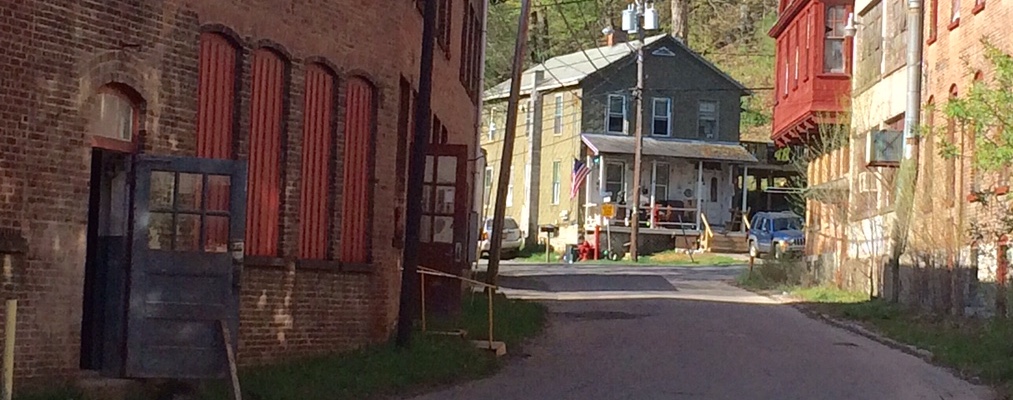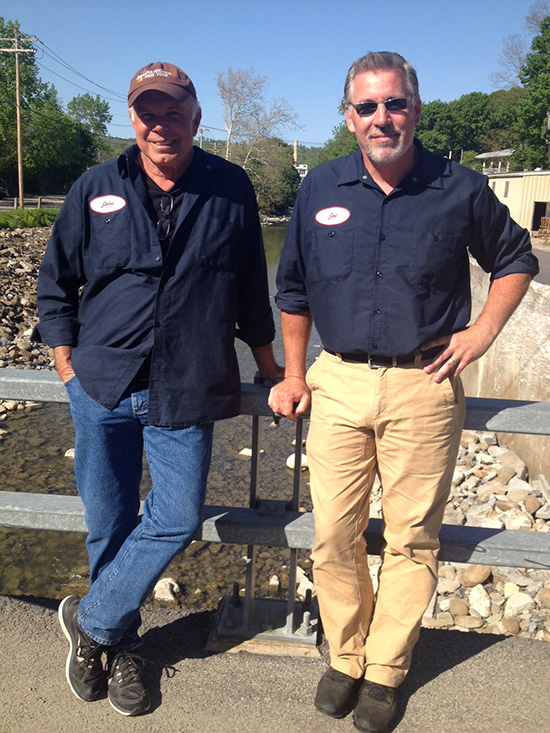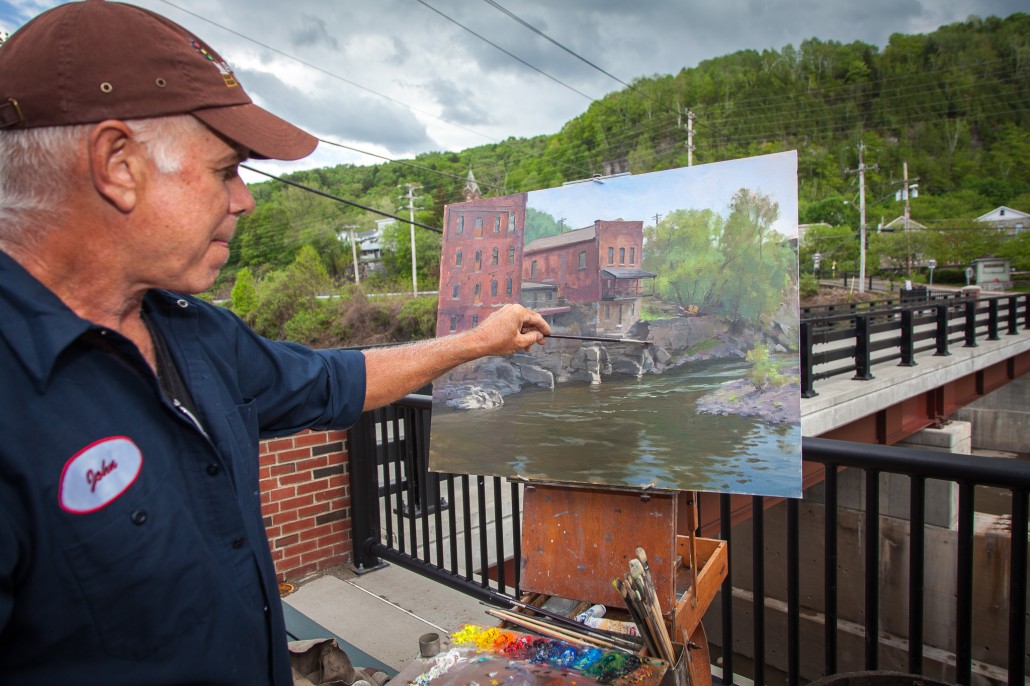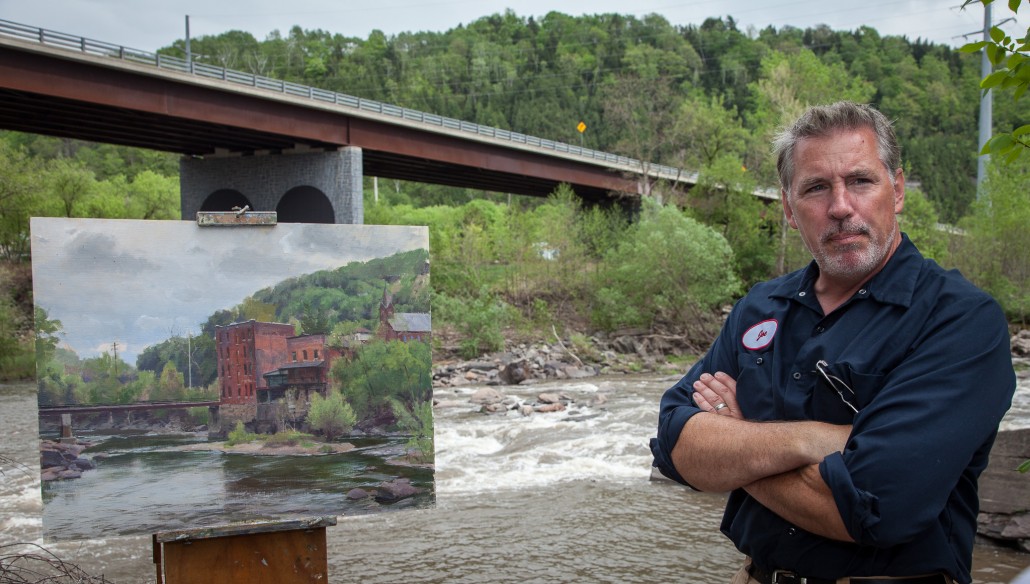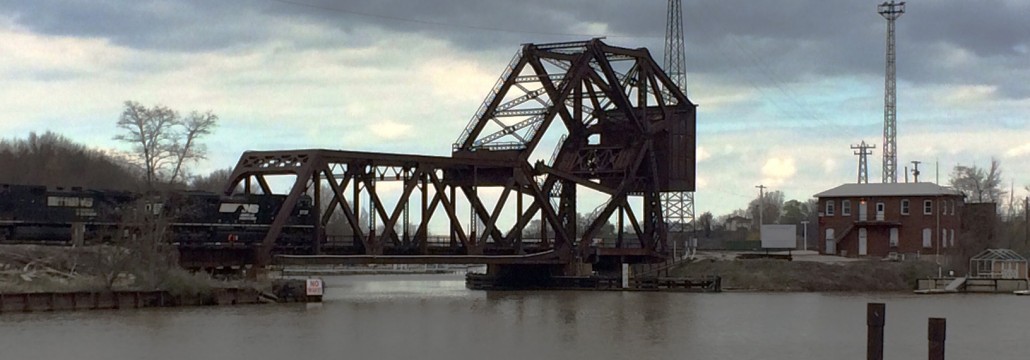Rust & Roadsides Trip # 5 Canajoharie & Little Falls, NY
After our last brutal trip along the shores of lake Erie we were heading to the Albany airport enjoying views of the Erie Canal and Mowhawk Valley when we caught a glimpse of the old Beechnut factory in Cananjoharie. Pulling off the highway we discovered a mill town intact: an aspect of the project we had not explored.
We decided then and there to return.
A year later we were back.
Canajoharie is the Mowhawk word for “Pot that washes itself”, describing a natural whirlpool below the falls on Canajoharie Creek. Mill Street follows the creek. The houses and mills still standing along the street were in a state of arrested decay giving us a good glimpse into its past and rich material for our brushes.
The cluster of old houses at the end of the road we affectionately termed ‘the fishbowl’ was a beehive of continuous activity with old men mumbling to themselves, young adults drinking beer and playing basketball. Weaving through all of it a kinetic stream of jelly-faced kids on razors, bikes and little tikes bright plastic vehicles.
-Very Dr. Suess.
Day one we were treated to a tour of the Arkell Museum by Sue Friedlander (of Collections) who gave us some history on the town and of the museums chief benefactor and Beechnut visionary Bartlett Arkell.
We spent the next five days painting along the creek being informed and entertained by folks who grew up and worked there.
The powder coating factory (once a creamery) also canned deer meat for the locals during the depression. The mill where the first flat bottom paper bag was produced. The school where Susan B. Anthony taught. The generations who worked at “the Beechnut”.
The Canajoharie Creek. The stone walls everywhere trying to corral and contain the creek and the paramount importance of that waterway in the lives of so many.
The physically broken men still at work: former dock builder now grateful to have a maintenance job. The weary, hunched, soot blackened man who passed me each evening from the coating company with a smile at days end.
The wholesale kindness and curiosity of the people, and genuine surprise that we’d chosen to document the town they loved.
Sometimes unknowingly reminding them of their everyday beauty.
A text note we received from our new friend “Captain Crunch” says it all:
“Yo b….! Checking
u out on
net…..hubba
hubba bubba
nice…. so happy I
got to share a
little life with u
two men….. Sorry
you have to share
“the man”
trophy…. low
budget…sincerely
I am in awe how
when I look at
streets everyday
not much
happens then
looking at your
paintings is like
instant memory
lane in living
color yes on the
canvas but
inside my
mind…like
therapy… OK so I have scared you
don’t be … I was
at a point I
needed
something to feel
alive…funny Joe
and john made
me realize How
much I love this
town and that I
am very much
alive….grrrrr
thank you
guys…..oh ya
look in the
mirrors and say I
am one cool dude…u deserve
it…love capt
crunch….
So thank you Canajoharie & Captain Crunch
LITTLE FALLS — Water and Stone
Another mill town built up around water – the Mohawk River and Erie Canal flow through it.
Massive stone walls dominate everywhere. Stone workers were lured from Carrara Italy specifically to serve the need. Massive blocks stacked, fitted and pinned with iron, stretch almost across the river and have the forever feeling of Roman ruins. Everything is on a God scale.
The message is lasting — permanence and prosperity.
However, in it’s present sleepy state, it takes imagination to give scale to it’s former power.
The mills produced Flour, Paper, Textiles, Batting, Tools and much more but the town has lost half its population since 1950.
At Canal Street, a bridge crosses the Mohawk River. There we were treated to a view of a pair of brick buildings stacked on stone foundations which were stacked on river bedrock. The Bedrock forms were wild and free form. We both realized that this was an iconic image and spent the next three days working on large canvases; John a view from the bridge and me working upriver on a concrete pad near the old hydro-electric plant. It was an unseasonable 83 degrees with brutal humidity.
While I was left in blissful silence to work on a secluded concrete pad under the trees John was baking in full sun on the bridge and visible to all passers-by including scads of jelly-faced children and couple of folks who were bent on bringing him closer to God.
From a safe vantage point I viewed the delightful pantomime with a guilty pleasure.
In this case the road less traveled was indeed the best choice.
The following day we painted from the 167 bridge with a great view of the Erie canal looking down on the old South side neighborhood. This was primarily where the Italian stonecutters lived.
The bridge rocked under our feet as lumber trucks rumbled by and curious joggers slowed down to get a look. One, a man who ran the local art association by the name of Kevin Milhaly stopped and was curious about the R2 logo on our work shirts and keenly interested in the project. We later had a beer together and he arranged a couple of interviews. These from the Little Falls Times as well as the Art in the Adirondacks (including a podcast) can be found here:
Art in the Adirondacks podcast: Interview with artists John Cosby and Joe Paquet, by Dave Warner
Little Falls Times article: Pair of nationally known artists visit Little Falls for project
We ended with a visit to Alan and Linda Vincent who lived in one of the brick buildings we had painted. Alan, a third generation mill owner, was handing the business to his son. The old photos and conversation were a fitting way to end our visit and tie together past and present.
The great weather made it possible for us to work relentlessly and add greatly to the project. We rented a 200-year-old farmhouse just outside of Canajoharie and enjoyed a commanding view of the Mohawk Valley.
While breathing in lilac and a budding world we grilled meat, laughed, had the occasional martini and reviewed the days work.
Paleo Plein Air.
If work gets better, I’d like to know about it.
Special thanks to our host Diane, Sue, Kevin, Alan, Linda and all of the folks who welcomed and informed us — bringing us one step closer to telling this American story.

